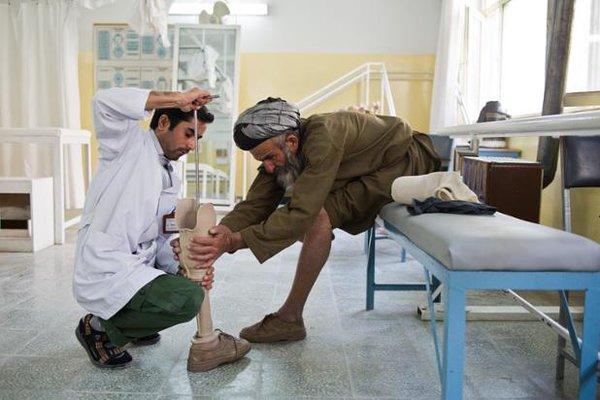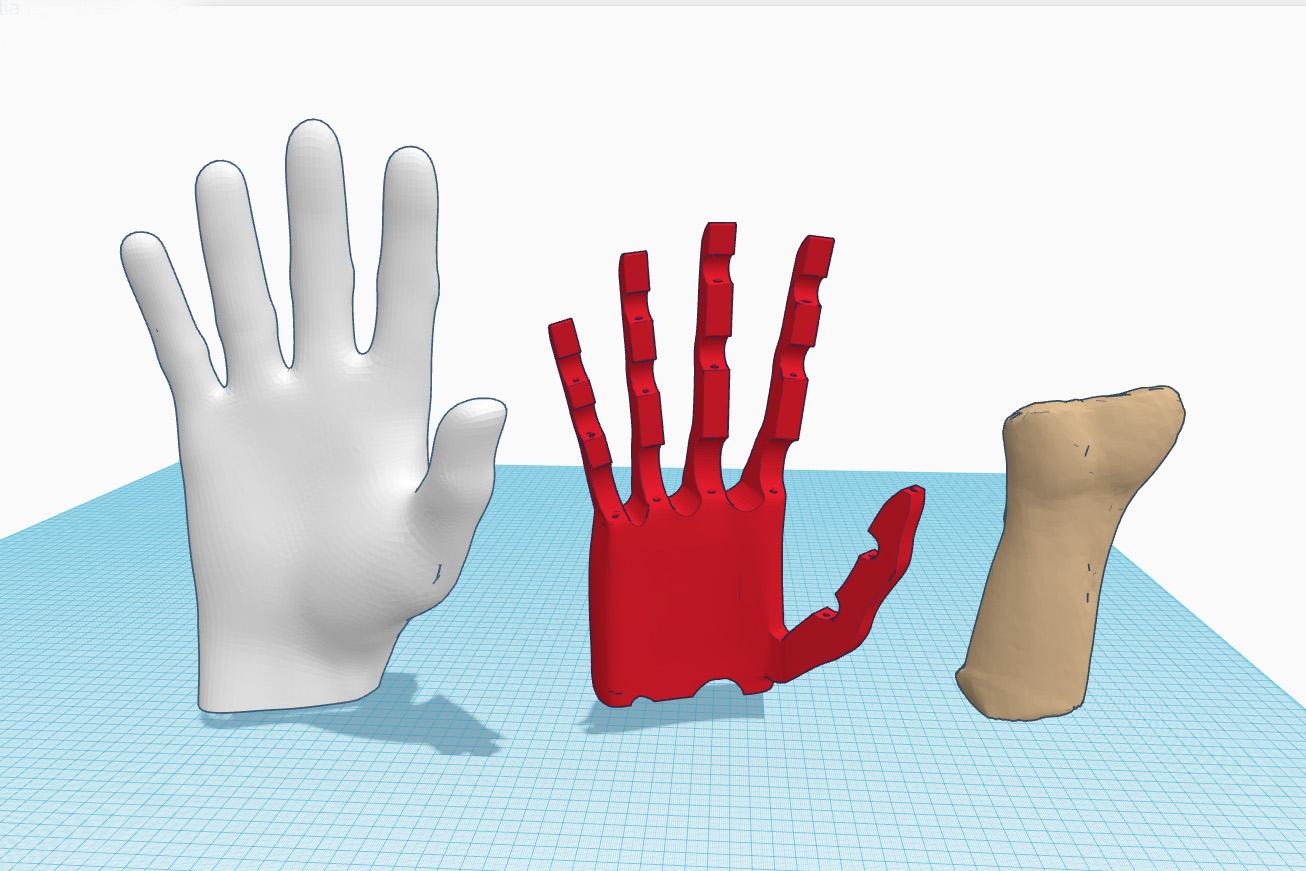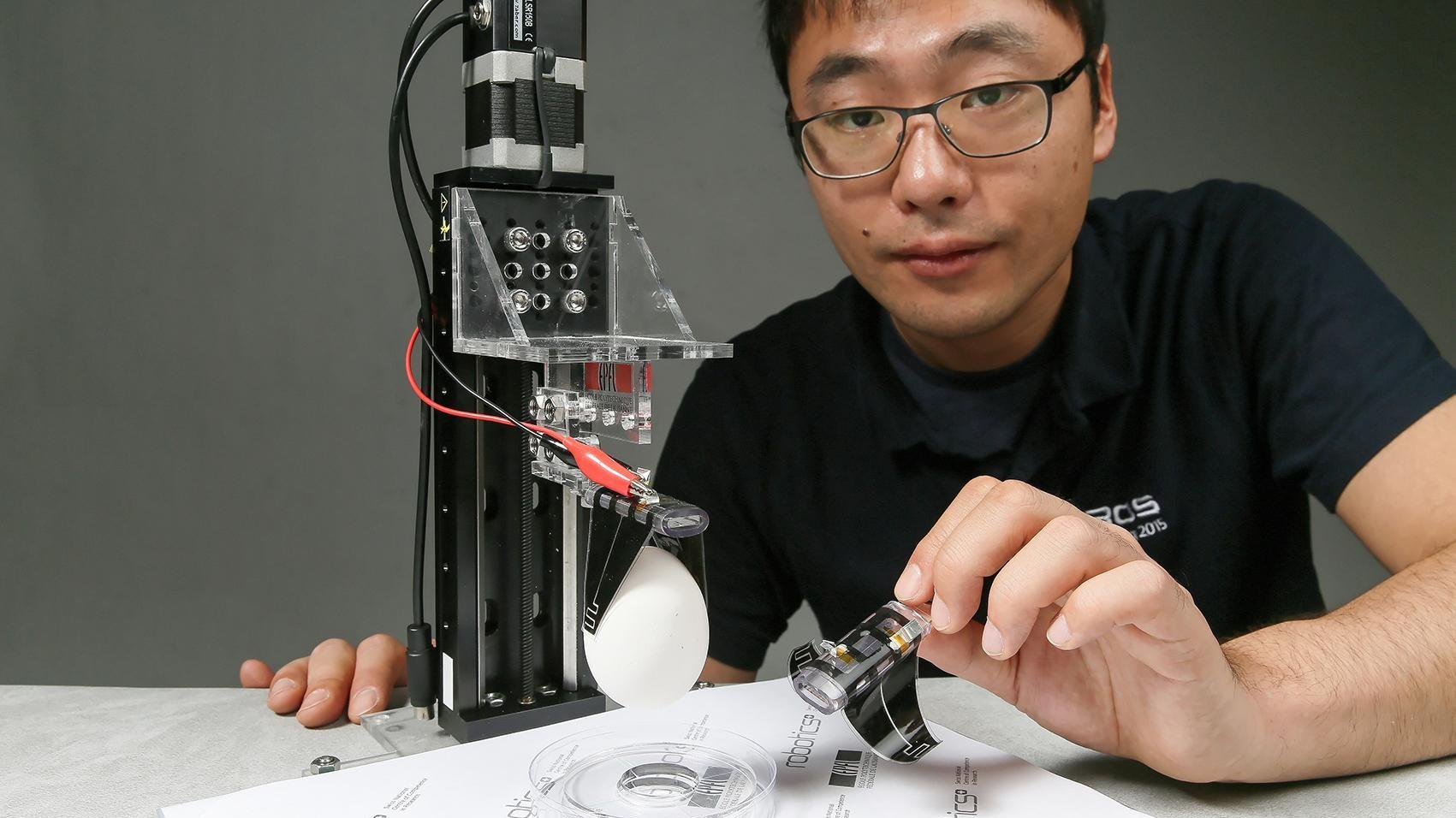When humanitarian assistance turns hi-tech

An affordable prosthetic foot for war amputees is the Lausanne-based Humanitarian Tech Hub’s first project. The research and development programme aims to harness technology to solve humanitarian problems.
The four-year hubExternal link is the fruit of collaboration between the Swiss-run International Committee of the Red Cross (ICRC) and the Swiss Federal Institute of Technology in Lausanne (EPFL).
“With more than 150 million people worldwide affected by humanitarian crises, the demand and potential applications are enormous,” the ICRC and EPFL said in a joint statement External linkon the hub’s launch on March 8.
The hub will make sure that the solutions developed – in areas such as biomedical technologies, logistics and the environment – are effective, scientifically valid and appropriate to the reality on the ground, Dikolela Kalubi, EPFL-ICRC programme manager, told swissinfo.ch.
Among its duties will be boosting scientific awareness of humanitarian technical challenges, “often misperceived as low-tech” and encouraging “entrepreneurial spirit to scale up solutions”, he said.
Collaboration between the academic and humanitarian sector is not new. But what is different is about the EPFL project is this strategy to develop and scale up innovations. This needs resources and particular skills, which the EPFL has, Kalubi said.
In addition, the EPFL has 40 years’ experience of working with the developing world through its Cooperation & Development Center (CODEV)External link and its programme EssentialTechExternal link. The hub is based at CODEV.
Low-cost foot
The first product to come out of the Humanitarian Tech Hub will be a low-cost artificial foot.
Project manager Gregory Huot, said prosthetic foot technology had evolved over the past decades with the introduction of advanced materials such as fibre composites.
“However, low-income countries and emerging markets have not benefited from this evolution despite the fact that 80% of worldwide amputees live in these areas; mainly because these more advanced prosthetic devices are not adapted to the social and environmental conditions of these contexts and also because of their high price,” he said.
“The project aims to address this challenge by developing and deploying an affordable and adapted prosthetic foot with advanced features.”
The foot will complete the range of prostheses that the ICRC already uses. In 2014, the ICRC helped 300,000 people via its physical rehabilitation services and prostheses.
Walk to work
The target group for the new artificial foot are active users who need to, for example, walk to work. “The main idea is to foster socio-economic reintegration of amputees by allowing them to regain the mobility they had lost whilst also freeing their entourage from necessary support tasks,” Huot told swissinfo.ch.
The hub has already brought people who are not used to working together around the same table, he said.
The team is currently translating the humanitarian needs into a detailed engineering specification and drawing up a business model for the artificial foot’s deployment.
“The next step of the project consists in securing funds to continue working on the design and the production of a first prototype,” says Huot.
The future?
Could this kind of collaboration represent the future? Kalubi said the need for innovation in the humanitarian sector has recently become more important. For example, the ICRC founded the Global Partnerships for Humanitarian Impact and Innovation (GPHI2)External link with business partners in 2014.
But more needs to be done, according to a March 2015 report External linkby consultants Deloitte. It found that the humanitarian sector’s current R&D spending – a key driver of innovation – is “fairly low” compared to other sectors. It would need an investment of $75 million (CHF73 million) annually to match other “low-tech” industries.
For Kalubi, the hub is a recognition of the R&D effort needed. “As it was recently said by the ICRC Director-General, humanitarian organisations cannot face these immense challenges alone. Building new types of partnerships is therefore critical to adapt.”

In compliance with the JTI standards
More: SWI swissinfo.ch certified by the Journalism Trust Initiative



You can find an overview of ongoing debates with our journalists here. Please join us!
If you want to start a conversation about a topic raised in this article or want to report factual errors, email us at english@swissinfo.ch.